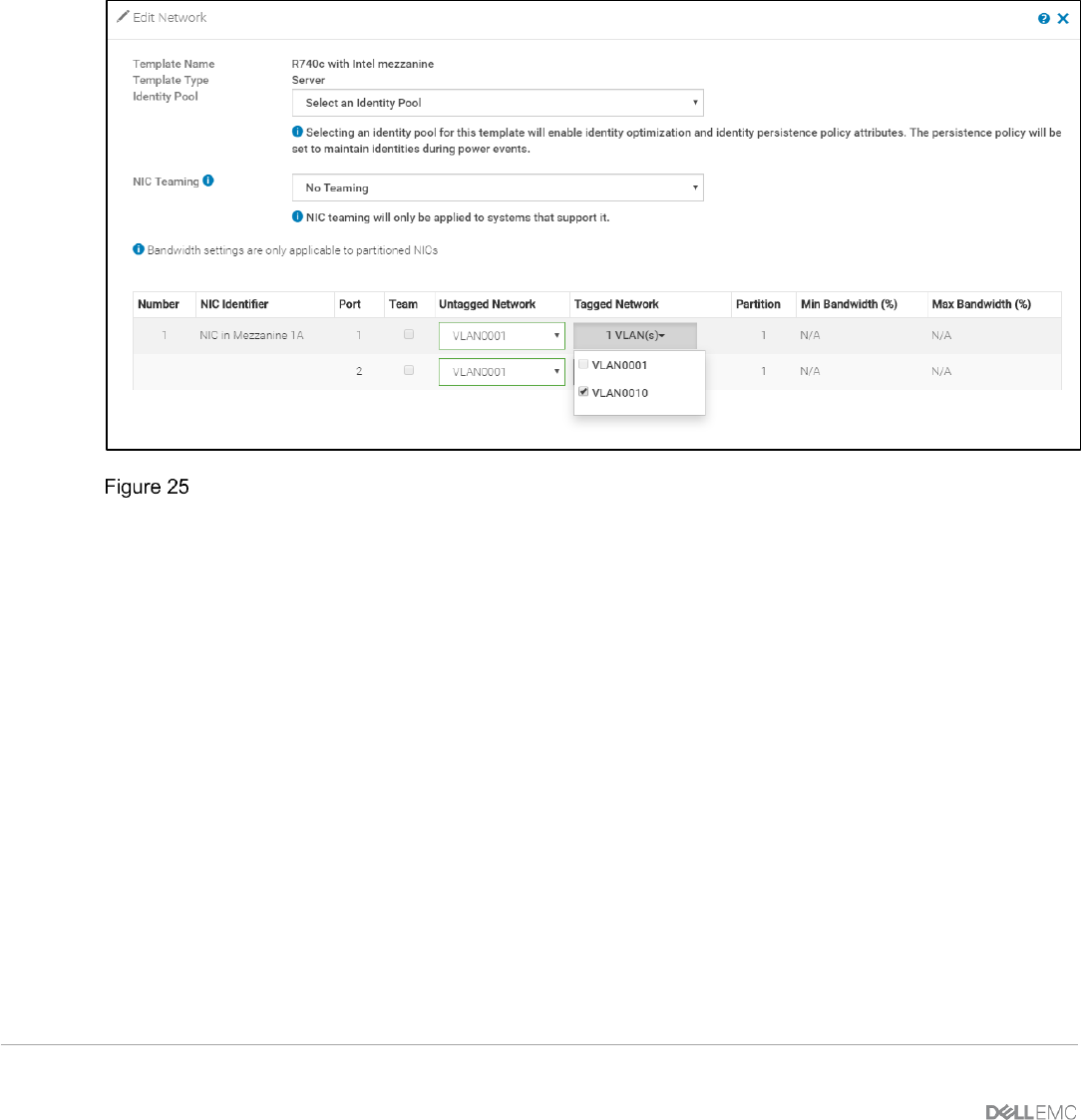Users Guide
Table Of Contents
- 1 Introduction
- 2 SmartFabric Services for PowerEdge MX: An overview
- 3 SmartFabric mode requirements, guidelines, and restrictions
- 3.1 Create multi-chassis management group
- 3.2 Upstream network requirements
- 3.3 VLAN scaling guidelines
- 3.4 Configuring port speed and breakout
- 3.5 Switch slot placement for SmartFabric mode
- 3.6 Switch-to-Switch cabling
- 3.7 NIC teaming guidelines
- 3.8 Maximum Transmission Unit (MTU) behavior
- 3.9 Other restrictions and guidelines
- 4 Creating a SmartFabric
- 4.1 Physically cable MX chassis and upstream switches
- 4.2 Define VLANs
- 4.3 Create the SmartFabric
- 4.4 Configure uplink port speed or breakout, if needed
- 4.5 Create Ethernet uplink
- 4.6 Configure Fibre Channel universal ports
- 4.7 Create Fibre Channel uplinks
- 4.8 Configuring the upstream switch and connect uplink cables
- 5 Deploying a server
- 6 SmartFabric operations
- 7 Switch operations
- 8 Validating the SmartFabric deployment
- 9 SmartFabric troubleshooting
- 9.1 Troubleshooting errors encountered for port group breakout
- 9.2 Troubleshooting Spanning Tree Protocol (STP)
- 9.3 Verify VLT/vPC configuration on upstream switches
- 9.4 Discovery of FEM and compute sleds
- 9.5 Troubleshooting uplink errors
- 9.6 Troubleshooting FC/FCoE
- 9.7 SmartFabric Services – Troubleshooting commands
- 10 Uplink configuration scenarios
- 10.1 Scenario 1 - SmartFabric deployment with Dell EMC PowerSwitch Z9100-ON upstream switches
- 10.2 Scenario 2 - SmartFabric connected to Cisco Nexus 3232C switches
- 10.3 Scenario 3: Connect MX9116n FSE to Fibre Channel storage - NPIV Proxy Gateway mode
- 10.4 Scenario 4: Connect MX9116n FSE to Fibre Channel storage - FC Direct Attach
- 10.5 Scenario 5: Connect MX5108n to Fibre Channel storage - FSB
- 10.6 Scenario 6: Configure Boot from SAN
- A Hardware used in this document
- B Dell EMC Unity information
- C Additional information
- D Validated components
- E Technical resources
- F Support and feedback

43 Dell EMC PowerEdge MX SmartFabric Configuration and Troubleshooting Guide
• The NIC teaming option can be selected from No Teaming, LACP teaming and Other as
mentioned in Table 6.
• For both ports, from the Untagged Network list, select the untagged VLAN. In this example,
VLAN0001 is selected.
• For both ports, from the Tagged Network list, select the tagged VLAN. In this example,
VLAN0010 is selected.
• Click Finish.
Figure 25 shows the associated networks for the server template.
Server template network settings
5.5 Associate Server Template with networks - FCoE
After successfully creating a new template, associate the template with a network:
1. From the Deploy pane, select the template to be associated with VLANs. In this example, MX740c
with FCoE CNA server template is selected.
2. Click Edit Network.
3. In the Edit Network window, complete the following:
• To choose FCoE VLANs, From identity pool list, Choose Ethernet CNA.
• For NIC in Mezzanine 1A Port 1, from the Tagged Network list, Choose FC A1.
• For NIC in Mezzanine 1A Port 2, from the Tagged Network list, Choose FC A2.
• Click Finish.
Figure 26 shows the associated networks for the server template.










